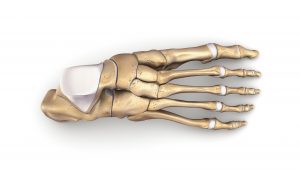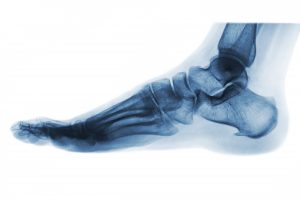overlapping toes
 Approximately 7% of individuals have at least one overlapping toe on one of the feet. The pinky toe most commonly overlapping, the big toe and second toe also may have involvement. Doctors see overlapping toes in both men and women of all ages. Some individuals may have one or more overlapping toes at birth or overlapping toes can develop over time.
Approximately 7% of individuals have at least one overlapping toe on one of the feet. The pinky toe most commonly overlapping, the big toe and second toe also may have involvement. Doctors see overlapping toes in both men and women of all ages. Some individuals may have one or more overlapping toes at birth or overlapping toes can develop over time.
Causes of overlapping toes
One or more overlapping toes may arise from an underlying foot condition, wearing tight shoes, or simply from genetics. Common causes of overlapping toes include:
- Foot conditions: Bunions, Flat feet, Hammer Toe, High Arches
- Genetics
- Arthritis
- Improper fitting shoes
- Biomechanics
Diagnosing overlapping toes
To diagnose overlapping toes, a foot and ankle surgeon starts with a physical examination of the patient. The specialist most likely also performs diagnostic testing to view the bones and structure of the foot. Most doctors use X-Ray to see the bones of the foot. Doctors may also utilize an MRI to analyze the location and structure of ligaments. Using multiple forms of diagnostic testing allows doctors to accurately diagnose patients and prepare for treatment. Every individual has unique anatomy so diagnostics allow surgeons to plan for any abnormalities.
Treating overlapping toes
The treatment of overlapping toes varies depending on the age of the patient and the root cause of the overlapping toes. For babies born with one or more overlapping toes, the treating pediatrician can attempt to tape the toe. Taping the toe typically yields results within 6 months. Pediatricians may also use stretching and toe spacers in newborn babies. Treatment at a very young age remains desired due to the positive outcomes early treatment yields.
When treating overlapping toes in adults, patients should always see a board certified foot and ankle specialist, such as Dr. Adam Crawford or Dr. Donald Stewart at AOA Orthopedic Specialists. For adult treatment of overlapping  toes, physicians typically start with conservative methods. Conservative methods for treatment of overlapping toes in adults include toe separators, properly fitting shoes, and physical therapy to aid in proper biomechanics. A surgeon may opt for surgical treatment of overlapping toes if the foot has a severely overlapping pinky toe or a deformity like a bunion.
toes, physicians typically start with conservative methods. Conservative methods for treatment of overlapping toes in adults include toe separators, properly fitting shoes, and physical therapy to aid in proper biomechanics. A surgeon may opt for surgical treatment of overlapping toes if the foot has a severely overlapping pinky toe or a deformity like a bunion.
EXPERIENCING foot and ankle PAIN? CALL 817-375-5200 TO SCHEDULE AN APPOINTMENT WITH AN AOA ORTHOPEDIC SPECIALIST TODAY!
F.A.Q.
What are overlapping toes, and what causes them?
Overlapping toes, also known as toe overlap or toe crowding, occur when one toe overlaps another. This condition can be caused by a variety of factors, including genetics, tight-fitting shoes, muscle imbalances, or other foot deformities. It can also result from conditions such as bunions or hammertoes.
How can I prevent or alleviate overlapping toes?
Preventing and alleviating overlapping toes often involves simple lifestyle changes. Ensure you wear properly fitting shoes with enough toe room. Toe exercises and stretches may also help improve toe alignment. In more severe cases, custom orthotics or surgical intervention may be necessary. It’s important to consult with a specialist for personalized advice.
When should I seek medical attention for overlapping toes?
If you experience persistent pain, discomfort, or difficulty walking due to overlapping toes, it’s advisable to seek medical attention. Additionally, if you notice any signs of infection, open sores, or skin irritation between overlapping toes, consult a healthcare professional promptly. Early intervention can prevent the condition from worsening.

